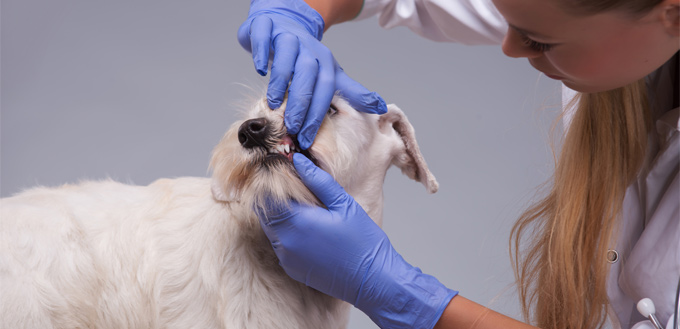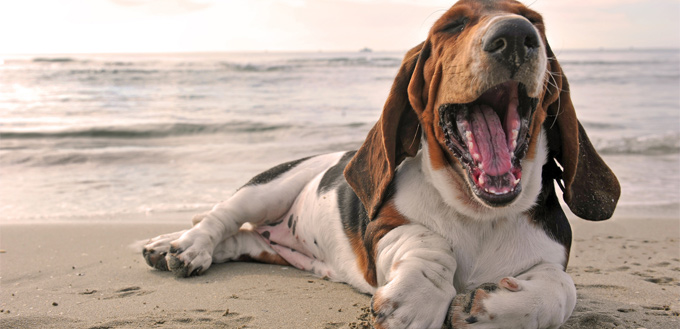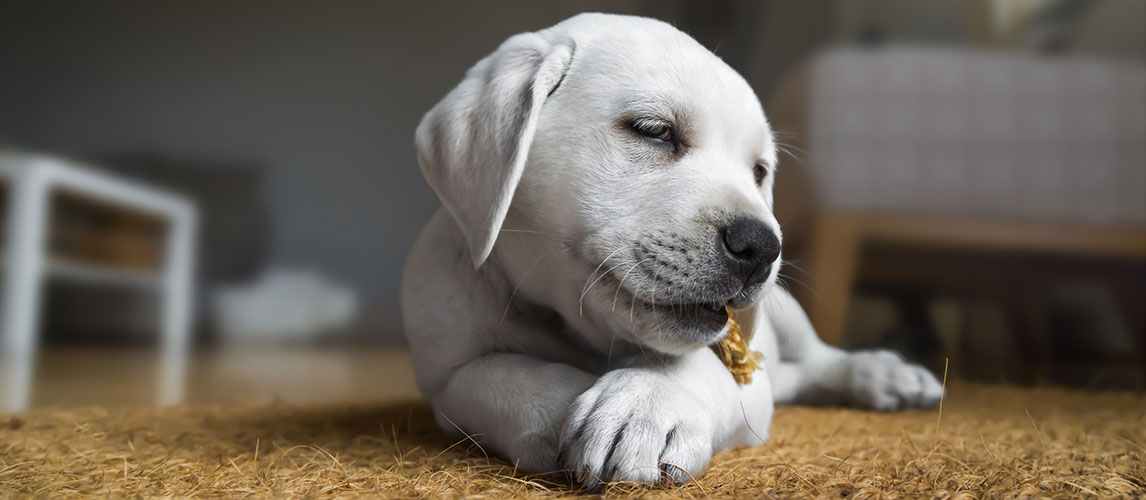Taking care of a puppy is demanding and requires a lot of effort. You need to consider feeding and training them, as well as finding enough time to play together. Aside from all that, you also shouldn’t neglect taking care of their teeth. Here is everything that you need to know in that area so that you are not surprised the next time when a puppy starts nibbling on your finger.

When Do Baby Teeth Appear?
Dogs are born without teeth, but the first signs of baby teeth start appearing around the third week of their lives. Everything happens rather quickly as they should fully develop their milk teeth by the end of the eighth week and, several weeks later, permanent teeth should already be gradually replacing them. The puppy should have 28 teeth in total, and these are:
- Incisors – they appear first, and you might notice them three to six weeks after the puppy was born. There should be 12 incisors in total – six in the maxilla (upper jaw) and six in the mandible (lower jaw)
- Fangs – other term used for these teeth is canines, and there are four of them. You will recognize their specific length and sharpness. Your puppy should have one in each side of maxilla and mandible. They should develop by the end of the fifth week of their life
- Premolars – the last one to show up and the last one in line, 12 premolars should appear around the fifth or sixth week of your puppy’s life
All of your dog’s baby teeth should fully develop by the end of the eighth week.
When Are Baby Teeth Replaced with Permanent Teeth?
It is interesting that many dog owners do not even notice when their pet starts to lose its baby teeth and replaces them with permanent ones. The process of teething starts when dogs are about three months old and may last for about a couple of months. You shouldn’t expect a lot of blood in the process, but there is a chance that you will notice a milk tooth in your puppy’s food from time to time. Your pooch might also swallow it, which is not something you should worry about as it is a normal occurrence.
Related Post: Best Toys for Teething Puppies
How to Take Care of a Teething Puppy
It is normal for your pet to be in some level of pain or discomfort during the teething process. There is no need for you to react unless you notice that your pup is refusing to eat, drink, or participate in various activities, such as playing and exploring the world. You can make the process a lot easier if you buy your puppy a chewing toy that is flexible and soft.
You May Also Like: Chew Toys for Puppies
In most cases, the baby teeth will fall on their own. You should avoid pulling them out as you may break the root of the tooth, which can cause an infection. If you notice that a permanent tooth is growing in the same space as the baby tooth, that may lead to crowding, which is why you should take your pup to the vet to get the baby tooth professionally removed.
You should regularly inspect your puppy’s mouth for potential problems or irregularities. That is why it is important to get your pup used to dog toothbrushes from its early childhood. If your dog is scared, start by touching its teeth and gums with your fingers in a playful way and introduce the toothbrush in a couple of days. While it is better to use dog toothpaste, you can also brush its teeth only with warm water. You shouldn’t use human toothpaste because of your pooch’s inability to rinse their mouth properly.
Finally, consult your vet how often should you take your dog in for oral examinations so that he can confirm that the pooch’s dental health is in order and everything is progressing the way it should.
How Many Teeth Does an Adult Dog Have?
The entire process of teething should end around the sixth month of your dog’s life. At that moment, your dog should have 42 permanent teeth, although this may depend on the breed and even the individual. There are four types of adult teeth in the permanent set, and these are:
- Incisors – the first baby teeth to show up and disappear to be replaced by their permanent counterparts. The change happens around three or four months, and there is no difference in number as there are also 12 of them – six in each jaw. Your dog will use these teeth to cut the meat close to the bone when eating and self-groom
- Canines – they appear at the same time as incisors, but they take their time to develop fully. Your dog uses these fangs for puncturing and gripping
- Premolars – while your puppy has 12 of them in the milky set, there will be 16 adult premolars in total. They should start developing when your dog is four or five months old, and you will recognize them by their jaggedness and sharpness. Your pet friend will often use them for chewing toys you buy
- Molars – these are an extra addition to the permanent set of your dog’s teeth. You can find four of them in the upper jaw (two on each side) and six in the lower jaw (three per side). They will start growing when your pup is about four months old, but you should give them a couple of months to develop. Molars are flat and broad, and they help your pet to pulverize and crush its food

As you can see, the process of dog teething begins very early, especially compared to human children who start losing their baby teeth when they are about five years old. If you notice that your pup is chewing on shoes or furniture, that is an excellent indicator of teething. The solution is introducing them to chewing toys, but make sure to consult with your veterinarian so that you know which size and type of toys are suitable for your particular breed.
Source:
- Dr.Jennifer Coates, When Do Puppies Lose Their Baby Teeth and Stop Teething?, PetMD






